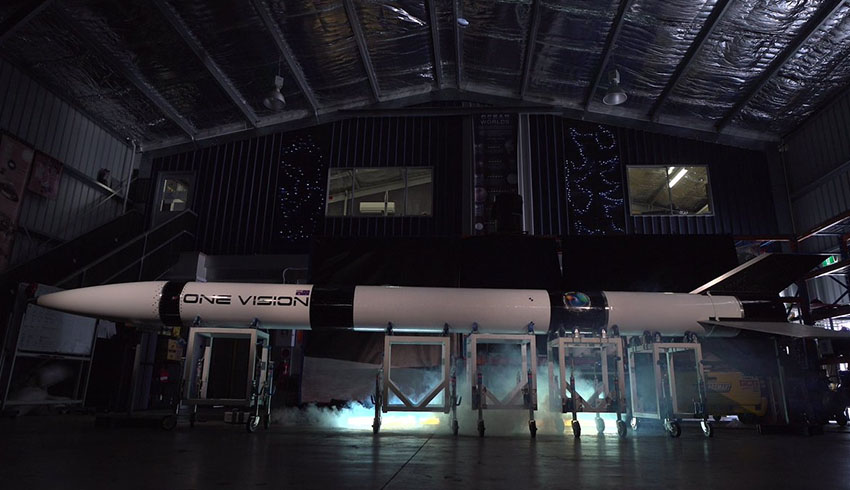
Gilmour chief executive Adam Gilmour said that at T-7 seconds to launch, the test rocket experienced an anomaly that resulted in the premature end to the mission.
Initial investigations showed that a pressure regulator in the oxidiser tank had failed to maintain required pressure, he said.
“This anomaly resulted in some damage to the tank and rocket. There was no explosion due to the safe nature of hybrid rocket engines and no observable damage to the engine,” he said.
The launch of the One Vision rocket was to have taken place from a property in outback Queensland and followed extensive testing. It was planned it would reach an altitude of 20-30 kilometres, about halfway to space.
This was intended as a flight test of the proprietary orbital class hybrid rocket engine and to demonstrate mobile launch capability and would have been the company’s second launch. In July 2016, the prototype “reusable ascent separation article” (RASTA) reached a height of about 5,000 metres.
“Our team is safe and understandably disappointed not to have completed the mission,” he said.
“It was a third-party component that failed and we will be following up on the matter with them. In any case, rocket engineering is all about testing, failing, learning and rebuilding.
“One Vision was a development and test rocket, and our learnings from here have already informed many of the design features in our next vehicle.
“Gilmour Space will now look to launch an enhanced version of this suborbital rocket in the near future, and test more of the technologies we will require for our orbital launches.”
While the rocket failed to launch, everything else worked as intended.
“Our team successfully tested the mobile launch platform and mission control centre, which had journeyed over 1,800 kilometres to the test site,” Gilmour said.
“The automatic load-and-launch ground support system performed nominally through countdown and went automatically into safe mode to dilute the oxidiser when the tank was compromised.”
Gilmour said with this mobile launch system, the company had the capability to launch a light orbital vehicle from anywhere in Australia.
“We would appreciate your continued support as we work to build a safe and reliable road to space for the next generation of small satellites in low-Earth orbit,” he said.
“We look forward to achieving more and greater things together. To the stars.”
Receive the latest developments and updates on Australia’s space industry direct to your inbox. Subscribe today to Space Connect here.









